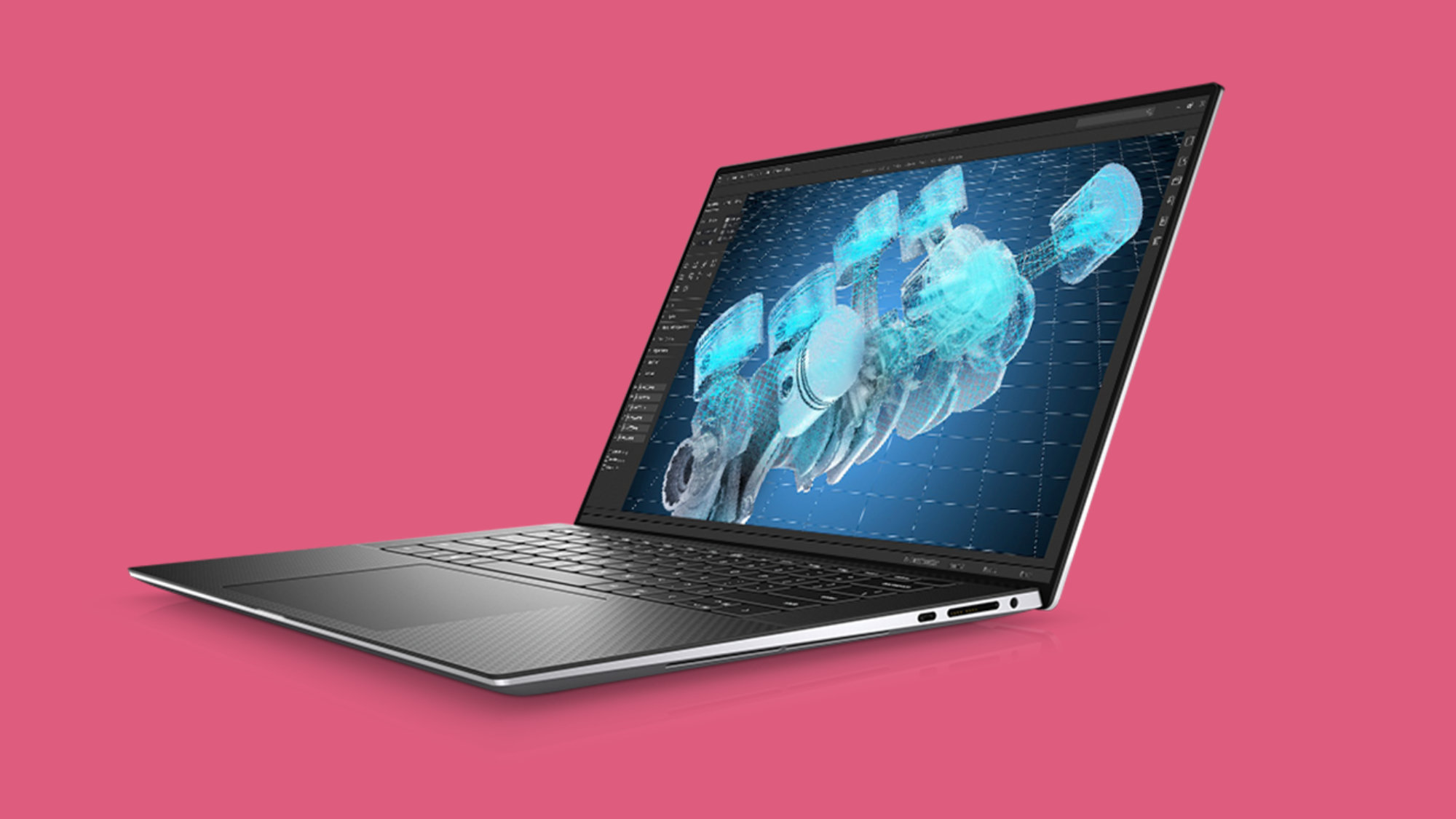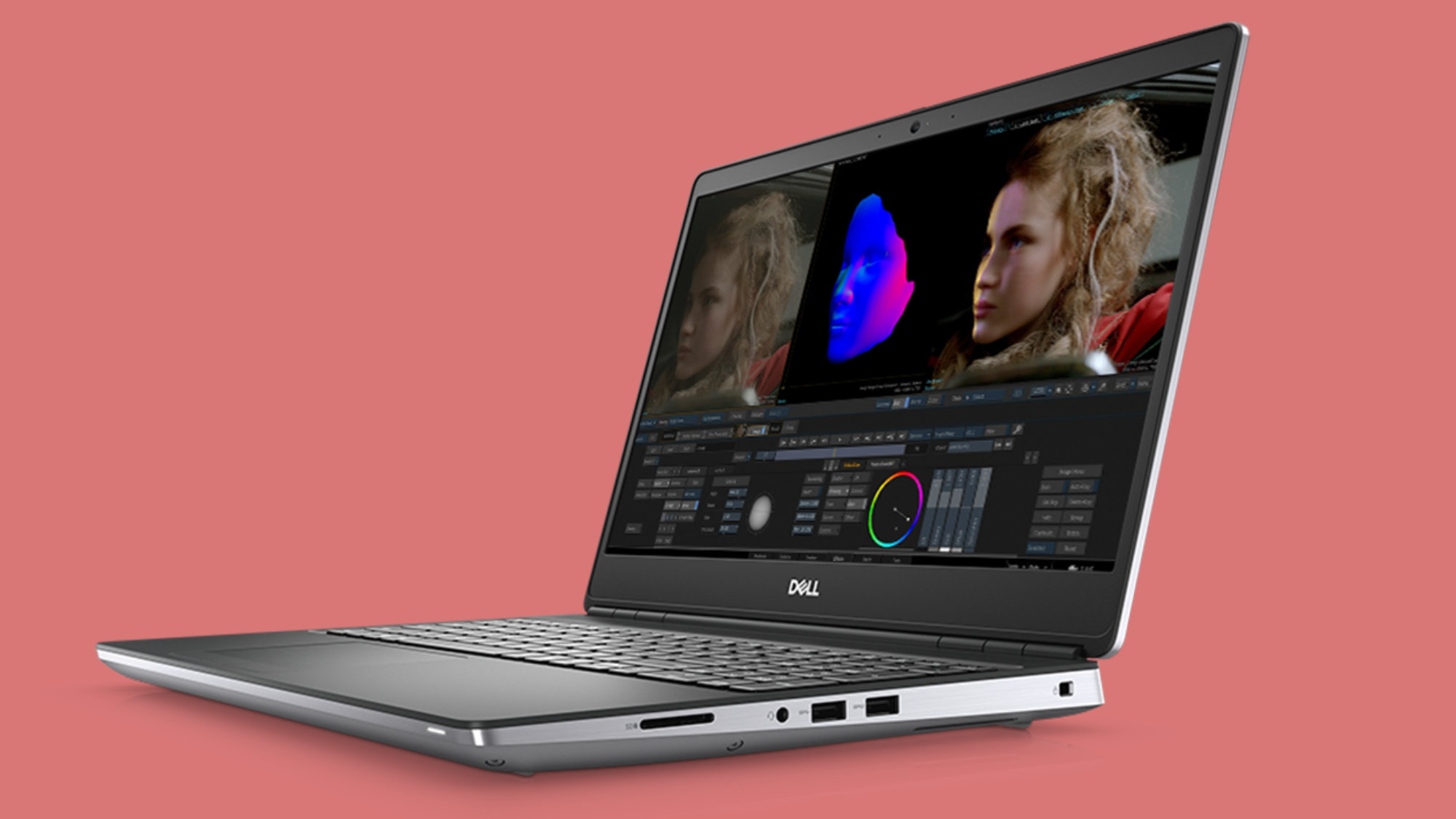XPS 15 gets business twin in new Precision 5550 — why the Precision could be even better
Dell just refreshed its fleet of Precision workstations

Dell is here to rescue anyone struggling to work from home using old, underpowered business laptops. The company announced today a large fleet of new Precision workstations, each for a different segment of users, from small businesses to researchers crunching astronomically large data sets.
Starting from the top and moving down, the Precision 7550 and 7750 are, according to Dell, the "most powerful 15-inch and 17-inch mobile workstations." Smaller and lighter than before, these beastly machines now pack Intel vPro or Xeon CPUs and Nvidia Quadro RTX 5000-series graphics.
- Best Dell Latitude and Precision Business Laptops 2020
- Dell XPS 15 review
- The Dell XPS 17 is real and here to kick the 16-inch MacBook Pro's butt
But the mid-range devices are arguably the most interesting of the bunch. The Precision 5750 and Precision 5550 look nearly identical to the new XPS 15 and XPS 17, but under the hood hide specs geared for business users. On the low end, you have the Prevision 3550 and Precision 3551, entry-level workstations for less-demanding workloads.
For those who aren't familiar, workstations are meant for intensive tasks, like CAD, 3D modeling and computer graphics rendering. They typically trade portability and endurance for power and features. With that said, let's take a look at what Dell has to offer with its new lineup of Precision notebooks.
Dell Precision pricing and availability
The Dell Precision 7750 and Precision 7550 will be available on May 28 at a starting price of $1999 and $1,789, respectively.
The Precision 5750 will cost a hefty $2,399 when it becomes available on June 9 and the Precision 5550 will go for $1,999 on May 28.
The 3000-series workstations are much more affordable; The Precision 3551 starts at just $939 while the Precision 3550 has a base price of $1,049. Both will launch on May 19.
Sign up to receive The Snapshot, a free special dispatch from Laptop Mag, in your inbox.
Dell Precision 7750 and 7550
The Precision 7750 has to be in the running for the most powerful laptop ever made. Let's skip the design and go right into the specs, because they are bonkers.
There are endless configuration options for the Precision 7750, so I'll only go over the maximum specs. On the CPU front, the Precision 7750 can be outfitted with up to an Intel Xeon W-10885M, an 8-core, 16-thread chip with a max frequency of 5.3Ghz, or a 10th Gen Intel Core i9-10885H with the same specs.

You won't have problems with 3D rendering as the Precision 7750 gets up to an Nvidia Quadro RTX 5000 GPU with 16GB of VRAM.
Here's where things get really crazy. The Precision 7750 can be configured with up to 128GB of RAM achieved via four 32GB DDR4 memory at 2933 MHz. Yes, I'm talking about RAM, not storage. About that storage: the laptop has room for four M.2 PCIe SSD slots for up to 8TB of Class 50 storage.
With that out of the way, let's talk about design. The Precision 7750 is apparent 20% smaller and 6% lighter than its predecessor, putting it at 15.8 x 10.4 x 1.1 inches and 6.9. It's still not the sort of laptop you want to carry to the office every day.
The 17.3-inch display on the Precision 7750 is available in 1080p or 4K versions with up to 500 nits of brightness. Security options include an IR camera, a fingerprint reader, a lock slot and a TPM 2.0 chip.
The Precision 7550 is nearly identical to the Precision 7750 but it has a 15.6-inch display in 1080p or 4K versions. The 15-inch model also has three SSD slots instead of four, and there is one fewer USB-A port (two instead of three).
Dell Precision 5750 and Precision 5550
As with the 7000-series Precision laptops, the 5000-series are available in 15-inch and 17-inch versions. The Precision 5750 and Precision 5550 are much thinner and lighter than the 7000-series devices but only offer a bit less performance. As such, the Precision 5750 and Precision 5550 are the more balanced notebooks.

Aesthetically, the Precision 5750 and Precision 5550 are nearly identical to the XPS 15 and XPS 17, flaunting a carbon fiber and aluminum chassis with a four-sided InfinityEdge display. They even have screens with a taller 16:10 aspect ratio.
Unlike the XPS 15 or XPS 17, you can equip the Precision 5750 and Precision 5550 with up to a Xeon W-10885M CPU and NVIDIA Quadro RTX 3000 graphics. Memory goes up to 64GB (2 x 32GB) and storage tops out at 4TB via two M.2 PCIe slots.
The Precision 5750 has a 17.3-inch whereas the Precision 5550 has a 15.6-inch panel. Both laptops offer the same display options: either a 4K touch or 1920 x 1200-pixel non-touch, each with up to 500 nits of brightness.
Dell Precision 3351 and 3350

They're the cheapest of the bunch, but the Precision 3351 and Precision 3350 can still be equipped with some beastly components. For example, the Precision 3351 can get up to an Intel Xeon W-10855M or Intel Core i9-10885H CPU.
RAM tops out at 64GB on the Precision 3351 but just 32GB on the Precision 3350. You can fit either one HDD and an M.2 SATA or a PCIe SSD in these two machines for up to 2TB of storage.
These both have 15.6-inch panels in either 1080p or 1366 x 768 resolutions. We strongly recommend getting the upgrade as 1366 x 768-pixel just doesn't cut when displaying modern, high-res content.
Phillip Tracy is the assistant managing editor at Laptop Mag where he reviews laptops, phones and other gadgets while covering the latest industry news. After graduating with a journalism degree from the University of Texas at Austin, Phillip became a tech reporter at the Daily Dot. There, he wrote reviews for a range of gadgets and covered everything from social media trends to cybersecurity. Prior to that, he wrote for RCR Wireless News covering 5G and IoT. When he's not tinkering with devices, you can find Phillip playing video games, reading, traveling or watching soccer.

